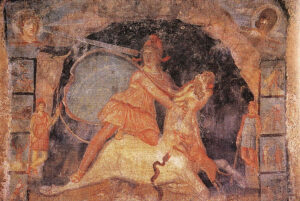
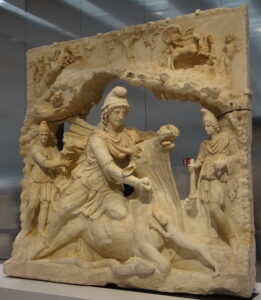


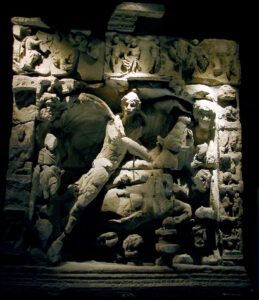

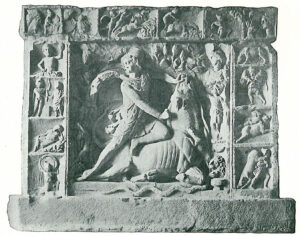
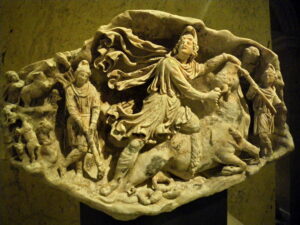
Mithra is a significant deity in ancient Persian mythology and Zoroastrianism, often associated with the sun, justice, contract, and war. His origins can be traced back to the ancient Indo-Iranian religion, where he was a god of light and the protector of truth. In Zoroastrianism, Mithra plays a crucial role as a divine figure embodying truth and righteousness.
In the Zoroastrian tradition, Mithra is considered an important yazata (a term used for beings worthy of worship), who presides over covenants and ensures that individuals uphold their promises and maintain honesty in their dealings. He is depicted as a powerful figure, carrying a weapon, usually a sword or a club, and sometimes accompanied by a divine chariot.
Mithra’s worship spread from Persia to the Roman Empire, where it transformed into the mystery religion known as Mithraism around the 1st to 4th centuries CE. This new cult, which was especially popular among the Roman military, portrayed Mithra as a god of soldiers and involved complex rituals and symbolism, distinct from his original attributes in Persian culture.
Key aspects of Mithra in the Persian context include:
- Guardianship of Cattle: In ancient texts, Mithra is often described as the protector of cattle, which were crucial to the agrarian societies of the time.
- Sun and Light: Mithra is closely linked to the sun, embodying light and the power that drives away darkness and evil.
- Judicial Role: He is also seen as a judge who oversees human behavior, ensuring that deceit and lies are punished.
Overall, Mithra’s attributes and worship highlight the importance of moral and ethical conduct, the sanctity of contractual agreements, and the battle against falsehood in ancient Persian culture.